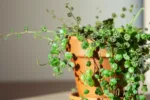Mums, or chrysanths, are blooming plants that are members of the aster family Asteraceae and belong to the genus Chrysanthemum. These vivid flowers are indigenous to northern Europe and East Asia, with China serving as the hub for species variety for the majority.

Types of Chrysanthemum Plant
There are countless varieties of chrysanthemums
- Incurve Chrysanthemum
- Reflex Chrysanthemum
- Pompon Chrysanthemum
- Anemone Chrysanthemum
- Single Chrysanthemum
- Quill Chrysanthemum
- Spider Chrysanthemum
- Decorative Chrysanthemum
- Button Chrysanthemum
Benefits of Chrysanthemum Plant
Beauty that Uplifts: Chrysanthemums bring a touch of joy and serenity with their vibrant blooms. Gazing at their colors can provide a moment of calm amidst the busyness of daily life.
Cleaner, Fresher Air for You: With their knack for purifying indoor air, chrysanthemums become not just plants, but silent companions in your home, ensuring you breathe easier and feel refreshed.
Easy Care, Lasting Happiness: Caring for chrysanthemums isn’t just about nurturing a plant; it’s about nurturing yourself. Their resilience and low maintenance needs mean more time for you to enjoy their beauty without stress.
A Natural Shield Against Pests: As guardians of your space, chrysanthemums fend off unwanted insect invaders, creating a cozy, bug-free environment where you can relax and unwind.
Emotional Connections: Beyond their petals and leaves, chrysanthemums carry stories of tradition, love, and celebration. Each bloom becomes a reminder of cherished moments and cherished people.
Disadvantages of Chrysanthemum Plant
Let’s simplify the disadvantages of chrysanthemum plants:
Susceptibility to Diseases: Chrysanthemums can be prone to various diseases, including bud blast, white rust, and leaf spot diseases. These issues can affect the plant’s overall health and appearance.
Pest Problems: Aphids are common pests that infest chrysanthemums. They can damage leaves and leave behind sticky honeydew, which attracts sooty mold.
Root Rot: Overwatering or poorly draining soil can lead to root rot, causing yellowing leaves and stunted growth.
Powdery Mildew: High humidity can encourage powdery mildew growth on chrysanthemum leaves and stems.
Allergic Reactions: Some people may experience allergic reactions to chrysanthemums.
Chrysanthemum Plant Care
Let’s simplify the disadvantages of chrysanthemum plants:
Susceptibility to Diseases: Chrysanthemums can be prone to various diseases, including bud blast, white rust, and leaf spot diseases. These issues can affect the plant’s overall health and appearance.
Pest Problems: Aphids are common pests that infest chrysanthemums. They can damage leaves and leave behind sticky honeydew, which attracts sooty mold.
Root Rot: Overwatering or poorly draining soil can lead to root rot, causing yellowing leaves and stunted growth.
Powdery Mildew: High humidity can encourage powdery mildew growth on chrysanthemum leaves and stems.
Allergic Reactions: Some people may experience allergic reactions to chrysanthemums.
Propagation of Chrysanthemum Plant
Propagating chrysanthemum plants can be a rewarding and straightforward process. Here are some easy methods for propagating these lovely flowers:
Root Division:
- Process: Divide an established chrysanthemum plant by carefully separating its root system into smaller sections.
- Steps:
- Choose a Mature Plant: Select a healthy, mature chrysanthemum plant.
- Dig Up the Roots: Gently dig up the plant, being mindful of the roots.
- Separate the Roots: Divide the root ball into several smaller clumps, ensuring each section has healthy roots and shoots.
- Replant: Plant the divided sections in well-draining soil, keeping them at the same depth as before.
- Water: Water thoroughly after replanting.
Stem Cuttings:
- Process: Take cuttings from the stems of a healthy chrysanthemum plant to create new ones.
- Steps:
- Select a Healthy Stem: Choose a non-flowering stem with several leaves.
- Cut the Stem: Use clean, sharp scissors or pruning shears to cut a 4-6 inch section just below a leaf node.
- Remove Lower Leaves: Prune off all but a few of the lower leaves from the top of the plant.
- Rooting Hormone (Optional): Dip the cut end in rooting hormone (if available).
- Plant the Cutting: Insert the cutting into a pot filled with well-draining soil.
- Keep Moist: Water the soil and cover the pot with a plastic bag or dome to maintain humidity.
- Root Development: After a few weeks, the cutting should develop roots.
- Transplant: Once rooted, transplant the cutting into a larger container or directly into the garden.
Layering:
- Process: Encourage a stem to root while still attached to the parent plant.
- Steps:
- Select a Low Branch: Identify a low, flexible branch.
- Bury the Branch: Bury a section of the branch in the soil, leaving the tip exposed.
- Secure in Place: Use a U-shaped wire or a small stake to hold the buried section in place.
- Root Development: Over time, roots will form at the buried section.
- Separate and Transplant: Once rooted, cut the branch below the rooted section and transplant it.
Repotting of Chrysanthemum Plant
Water the plant thoroughly for a day or two before repotting. This will reduce the likelihood of damaging the roots and make working with the soil easier.
Prepare the new pot. Add a layer of fresh potting mix to the bottom of the new pot, enough to raise the root ball of the chrysanthemum to the desired level (usually about an inch below the rim of the pot).
Carefully remove the chrysanthemum from its current pot. Squeeze the pot’s sides gently to flip it upside down. Tap the rim of the pot on a table or work surface to loosen the root ball. If the plant is stubborn, you can slide a butter knife around the edge of the pot to help release the roots.
Gently loosen the roots. You can gently tease out any circling roots with your fingers. Avoid breaking or damaging healthy roots.
Position the chrysanthemum in the new pot. Center the plant in the pot and fill in around the root ball with fresh potting mix. Gently press down on the earth to eliminate any pockets of air.
Water the plant thoroughly. Water the drainage holes until the water drains out. This will help settle the soil around the roots.
Place the repotted chrysanthemum in a bright location with indirect sunlight. Avoid placing it in direct afternoon sun, especially during hot weather.
Monitor the plant and water regularly. Water the plant when the top inch of soil feels dry to the touch.
Chrysanthemum Plant Disease
Here’s a summary of several common chrysanthemum plant diseases:
Fungal Diseases: Fusarium Wilt: This is a vascular wilt disease caused by the fungus Fusarium oxysporum. Symptoms include yellowing leaves, wilting (typically on one side of the plant initially), and reduced development. The vascular tissue in the stems may reveal a reddish-brown hue.
Powdery Mildew: This fungal disease causes white powdery spots or patches to grow on the leaves and stems, generally commencing on the top surfaces of the leaves. Severely diseased leaves become dark and shrivel.
Septoria Leaf Spot: This fungal disease is characterized by tiny, round spots on the leaves, first yellowish and developing to brown or black. The spots may have a purple edge, and as the illness spreads, leaves might wither and die prematurely.
Chrysanthemum Plant Vastu
chrysanthemums are auspicious plants for bringing positive energy into the home. Here’s a breakdown of the benefits and placement according to Vastu:
Benefits:
- Symbolism: Chrysanthemums represent happiness, optimism, and longevity. Their vibrant colors are believed to attract positive vibes and good luck.
- Air Purification: Chrysanthemums help purify the indoor air by removing toxins and pollutants.
- Positive Energy: In Vastu, chrysanthemums are believed to promote feelings of satisfaction, confidence, and brilliance within the household.
Placement:
- Living Room: The most recommended place for a chrysanthemum plant is the living room. Here, it can brighten the space with its blooms and contribute to a cheerful and harmonious atmosphere. Ideally, position it near a window where it receives plenty of indirect sunlight.
- Not Bedrooms: Vastu advises against keeping chrysanthemums in bedrooms. The reasoning behind this varies by source, but it generally relates to the plant’s energy being more stimulating than calming, which might disrupt sleep.
Additional Tips:
- Color: While all chrysanthemums are considered beneficial, some sources claim yellow chrysanthemums specifically promote happiness and prosperity according to Vastu.
- Plant Care: Following proper care practices like watering, sunlight, and pest control is important to ensure your chrysanthemum thrives and brings forth its positive influence. A healthy plant is considered to bring more auspicious energy.
Chrysanthemum Plant for Pets
Let’s customize the advantages of chrysanthemum plants for our four-legged companions:
Vibrant Friends for Animals: Not only are chrysanthemums beautiful flowers, but they are also lively, vibrant companions that pique our pets’ interests. Their vivid blossoms have the power to cheer up our animal friends.
Purified Air for Well-Being Pets: Chrysanthemums filter the air, making it a better environment for our dogs to live in. They ensure that the air our cherished animals breathe is free of poisons.
Simple Upkeep, More Playtime: Because chrysanthemums need little upkeep, pet owners may spend more time with their animal companions. Less time is spent caring for plants, which means more time for playtime, walks, and cuddling.
Natural Insect Repellent for Pet-Friendly Environments: Chrysanthemums naturally ward off insects, eliminating the need for dangerous pesticides. This implies that our pets may enjoy being outside without being bothered by pests.
Memories and Shared Experiences: Chrysanthemums become a part of our dogs’ surroundings, bringing back memories and shared experiences. Chrysanthemums bring a bit of magic to our pets’ lives, whether they are playing in the yard or seeing them smell the blooms.
How to Buy Chrysanthemum Plant
If you’re interested in buying chrysanthemum plants, here are some tips to guide you:
Choose Healthy Plants: Look for chrysanthemum plants with lush, deep green leaves. Avoid those with very light or yellowing leaves, as they may indicate disease or soil quality issues.
Consider Rooted Cuttings or Small Plants: Chrysanthemum plants are often sold as rooted cuttings or small potted plants. If you’re starting from scratch, consider buying rooted cuttings and potting them at home.
Chrysanthemum Plant Names in Other Languages
Here are the names of the chrysanthemum plant in several other languages:
- Spanish: Crisantemo
- French: Chrysanthème
- German: Chrysantheme
- Italian: Crisantemo
- Portuguese: Crisântemo
- Chinese (Mandarin): 菊花 (Júhuā)
- Japanese: 菊 (Kiku)
- Korean: 국화 (Gukhwa)
- Russian: Хризантема (Khrizantema)
- Arabic: وردة الدمسق (Wardat al-Dimasq) – (Literally translates to “Damascus rose” in Arabic, commonly used term for chrysanthemum)
- Telugu: సేంత పువ్వు (Sēnta puvvu)
- Hindi: गुलदाउदी (Guldaudi)
- Kannada: ಸೀಸುವಾಣಿ (Sīsuvāṇi)
- Tamil: சாமந்தி பூ (Cāmanti pū)
Conclusion
the chrysanthemum plant, with its vibrant blooms and numerous benefits, is a valuable addition to any garden, home, or landscape. Its beauty uplifts our spirits, while its air-purifying qualities contribute to a healthier indoor environment. Easy to care for and resilient, chrysanthemums offer lasting happiness with minimal maintenance.
FAQs of Chrysanthemum Plant
1. What are the different types of chrysanthemums?
Ans: Mums come in many shapes and sizes! There are fluffy ones, ones with single petals, and even spiky ones.
2. What’s good about having chrysanthemums?
Ans: They have beautiful fall flowers that last a long time, and some kinds might even help keep bugs away!
3. Are there any downsides to chrysanthemums?
Ans: They can get sick sometimes if you don’t take care of them, and some don’t like really cold weather.
4. How do I keep my chrysanthemum happy?
Ans: They like lots of sunshine and well-drained soil, which means they don’t like sitting in puddles. Water them regularly, but not too much. Also, picking off dead flowers helps them make more blooms!
5. Can I grow more chrysanthemums?
Ans: Yes! You can try planting seeds, taking stem cuttings, or dividing existing plants
6. My chrysanthemum needs a bigger pot, what do I do?
Ans: This means it’s happy and growing! Choose a pot with holes in the bottom and fresh potting mix, then give your mum a new home.
7. What if my chrysanthemum gets sick?
Ans: Look out for white fuzz or brown spots on the leaves. If you see them, ask a grown-up about plant medicine (fungicide) to help.
8. Can I keep a chrysanthemum inside my house (Vastu)?
Ans: Yes! In some traditions, mums are considered good luck.
9. Are chrysanthemums safe for pets?
Ans: No, unfortunately, chrysanthemums can be poisonous to cats, dogs, and other furry friends. Keep them out of reach!



I love the efforts you have put in this, appreciate it for all the great posts.